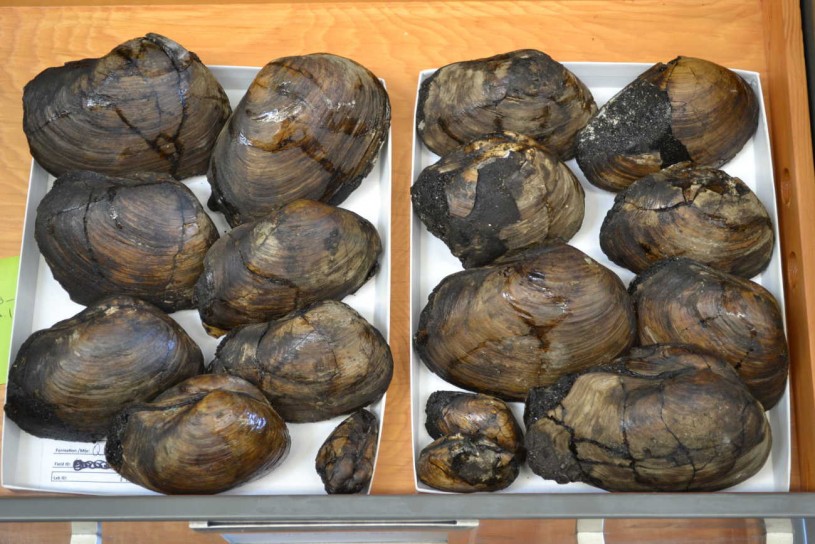The Hart Museum remains closed. Los Angeles County has approved a plan to transfer the William S. Hart Museum and Park from the County to the City of Santa Clarita.
Was Hancock Park Beachfront Property 120,000 Years Ago?
Pacific Gaper Clam: A large, common bivalve that inhabits sandy areas of bays along an open coast, often buried a foot or more.

Pacific Gaper Clam: A large, common bivalve that inhabits sandy areas of bays along an open coast, often buried a foot or more. Today it ranges from Humboldt Bay northern California to Punta Rompiente, Baja California Sur. Metro Fossils Asphalt soaked fossils are not new to the Hancock Park area of Los Angeles and most residents are already familiar with the iconic mammoths, saber-tooth cats, and dire wolves on exhibit at the La Brea Tar Pits and Museum that are between 11,000 and 40,000 years old. However, in 2014 during test excavations for a future Metro Purple Line Station at the corner of Wilshire Blvd. and Ogden Dr., a deposit of late Pleistocene marine fossils (120,000 to 300,000 years old) was excavated. Big News for L.A. The find made the front page of the Los Angeles Times and indicated that more fossils would likely be discovered as construction continues. What made this fossil collection unique from other marine Pleistocene deposits in the Los Angeles Basin is that the fossils are saturated with gooey asphalt much like the specimens collected from the La Brea Tar Pits. However, at 120,000 to 300,000 years old, these fossils are much older than those from the tar pits and were deposited much deeper. How did this occur? Asphalt migrated towards the surface along a buried fault, possibly the San Vicente Fault, from the Salt Lake Oil Field beneath Hancock Park. As it rose the asphalt encountered marine fossils in strata of the “San Pedro Formation” and saturated them completely. The asphalt eventually reached the surface where the tar pits ultimately formed.

A California Butter Clam found during Metro Purple Line construction. A large, common bivalve that lives in muddy/sandy areas of bays. Its modern range is from Kodiak, Alaska to Bahía Magdalena, Baja California Sur. A Marine Fossil Bonanza The 2014 discovery included a suite of invertebrates (animals without a backbone) that are indicative of a shallow-marine environment very much like that of modern Santa Monica Bay. In fact, large numbers of near-shore species such as the Pacific Gaper Clam (Tresus nuttallii) and the California Butterclam (Saxidomus nuttalli) indicate that the shoreline may have been in the Hancock Park area over 100,000 years ago! Over 60 species of mollusks, sea urchins and sand dollars, barnacles and crabs, worm tubes, moss animals, and encrusting hydrozoans were identified from this exploratory site that is 60 to 80 feet below street level. One Extinct Species With one exception all of these invertebrate species are still living. The single extinct species is a large Slipper Shell (Crepidula princeps). In 1970 paleontologists James Valentine and Jere Lipps reported a small assemblage of asphalt soaked marine invertebrates from a construction site just east of the current excavation. Unfortunately, the collection was lost, but field notes made available by Jere Lipps indicate that these two faunal assemblies are very similar. As subway construction proceeds westward it is anticipated that there will be a lot more of these marvelously preserved fossils unearthed for ongoing and future research. So … over a 100,000 years ago the surf was indeed up in Hancock Park! Cowabunga dudes!

A tray of Pacific Gaper Clam specimens, ranging from juveniles to adults. **Writing and photographs by Lindsey Groves, @Malacology Collections Manager. Reference: Valentine, J.W. and Lipps, J.H. 1970. Marine fossils at Rancho La Brea. Science 169(3942):277-278, fig. 1.